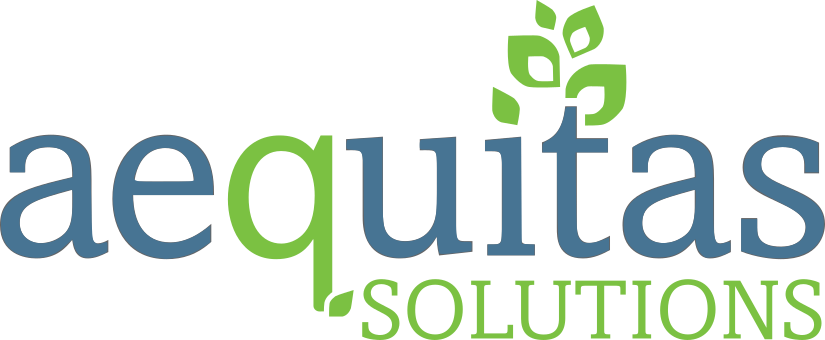Changing your Student Information System is no easy feat. The successful implementation of a Student Information System (SIS) is crucial for efficient administrative processes, enhanced communication, and improved student outcomes. The adoption of an SIS across an entire district, however, can be a complex endeavor, requiring strategic planning and thoughtful execution.
With nearly everyone in your district being affected by the change, experiencing some headaches along the way is inevitable. Due to the sheer size of the project, districts often have a reactionary approach to their SIS implementation and address issues as they happen rather than preparing in advance. This can often leave staff feeling overwhelmed and confused as they switch systems.
In contrast, school districts that take a proactive approach by getting their stakeholders involved, gathering feedback and input, creating a clear training plan, and incorporating ongoing professional development, enjoy a higher chance of a more positive, successful SIS adoption.
In this blog, we’ll explore six actionable tips to improve an SIS adoption initiative across your district.
1. Engage Staff and Stakeholders Early and Often
Engaging staff across your district, including management, teachers, and administrators, from the beginning is essential for the successful implementation and adoption of a new SIS. This buy-in should start at the onset of your district’s SIS evaluation process. Communicating the need for and benefits of a new SIS is crucial for getting everyone on board with your district’s vision.
An effective way to help communicate the benefits of your new SIS is by holding regular informational sessions, workshops, and feedback forums to keep everyone informed about the SIS implementation progress. Encourage open dialogue to address questions, gather feedback, and incorporate suggestions into the system’s development. When district personnel feel that their input is valued, they are more likely to embrace new technology.
Establishing a clear communication plan that highlights the benefits of the system, timing, and logistics of the new SIS implementation can address staff concerns and help build a sense of inclusion, easing the stress that comes along with change.
2. Configuration for District-Specific Needs
Every school district has its unique set of requirements and workflows. A one-size-fits-all SIS and implementation approach may not effectively address the specific needs of each district. To increase adoption, you should first select an SIS that supports your district’s goals, policies, and existing processes.
Start by working closely with district administrators to identify key selection criteria, which should include the functionality and resources required from your new SIS vendor. Once you have determined your selection criteria, build your vendor evaluation process. Vendors should demonstrate how their SIS will meet your district’s needs to support your overall educational objectives.
Vendor product configuration to your district’s requirements and business processes will be executed during the implementation process. Your SIS vendor should take the time to get familiar with your district and processes to develop a tailored implementation plan. This plan should include data migration and system set-up. An implementation timeline that aligns with your district calendar and includes training plans for each department.
These implementation details can vary greatly between districts and affect the overall success of your SIS implementation. Ensure there are implementation leads in your district and on the SIS vendor team that are directly responsible for the execution and success of your implementation plan.
3. Comprehensive Training Programs for Educators
A successful SIS implementation should empower educators through comprehensive training programs. A well-designed training curriculum should cover not only the technical aspects of using the system but also its practical applications in day-to-day tasks. Training sessions should be tailored to different roles within the district, ensuring that teachers, administrators, and support staff are equipped with the skills needed to maximize the benefits of the SIS.
For example, administrators should be trained on security settings and reporting, while teachers should be trained on grade books, attendance, and parent communications. This tailored approach helps ensure your staff is comfortable with the new SIS in their day-to-day tasks and responsibilities.
Access to ongoing professional development opportunities and creating a user support network can significantly boost confidence and enthusiasm for incorporating the SIS into their daily workflows. Choosing an SIS that realizes the importance of this aspect and has professional development accessible in their software is critical.
For example, Q Academy and the Q User Experience offers self-paced learning and peer-to-peer support. With two different self-paced tracks for teachers and office staff, Q Academy lessons are tailored to ensure that staff across your district are comfortable with the SIS in their daily workflow.

4. Clear SIS Data Migration Process
One of the biggest headaches of switching to a new Student Information System is the data migration between your current SIS and the new product. To help with this critical aspect of implementation, it’s important to make sure your vendor has a proven approach to data migration. This typically includes data templates for exporting student and staff data, transcripts, and other mission-critical data from your current SIS into their product.
It is also important to allocate district resources to facilitate the process of migrating data from your old SIS to your new one. This is typically a member of your team who understands how your data is structured and can help validate the information being moved between the old and new SIS products.
Before you start transferring data, your district should evaluate what data will be archived and what information will be moved to the new SIS. For example, student enrollment, demographic, and transcript information will likely be migrated, but historic student attendance may be archived in data file extracted from the current SIS.
You should also consider the health of your existing data. Check to see if there are duplicate fields, errors, or mixed data types that should be fixed before importing into your new Student Information System. Although this is time-consuming to correct, it can take even longer to update it in your new SIS. Cleaning up your data beforehand can help save time in the long run.
Ensuring a smooth data transition between your two systems will ensure your district can utilize your new and existing data seamlessly to make data-backed decisions.
5. Outlined Implementation Roles
Your district should have clear roles defined for your SIS implementation. These roles can cover a spectrum of responsibilities, ranging from project management to user training to data migration.
Some key roles can look like the following:
- Implementation/Project Lead: This person is the main point of contact with your SIS provider and helps ensure a smooth interaction with them.
- SIS Admin: This person is responsible for the administration and support of the SIS, including ongoing training and overseeing the day-to-day operations.
- Technology Lead: This role addresses and resolves technological issues that occur during your implementation.
- Superintendent and/or Assistant Superintendent: These roles should provide leadership during the implementation process and act as an advocate for the project.
- Training Lead: This person is a site-level lead who works with the SIS vendor to develop and deliver end-user training on the new SIS.
- Data Migration Lead: This role facilitates the successful data migration between your old SIS and the new product.
Clearly defining these implementation roles and assigning responsibilities accordingly will contribute to a well-organized and efficient SIS implementation process.
6. Continuous Evaluation and Improvement
Although the heavy lifting might be done once your new Student Information System is up and running, the adoption of an SIS is an ongoing process. To ensure continued success and buy-in, you should establish avenues for continuous evaluation and improvement to ensure that the system remains aligned with district and staff needs.
Regularly solicit feedback from users through surveys, focus groups, or direct communication channels. A proactive approach to addressing issues and refining the system based on user feedback demonstrates a commitment to continuous improvement and reinforces the value of the SIS within your district.
Successfully increasing Student Information System adoption across a district requires a multifaceted approach that addresses the needs and concerns of staff throughout your district. By prioritizing training staff and having a clear implementation plan and roles, districts can create an environment conducive to embracing a new SIS. The goal is to integrate your Student Information System seamlessly into your district’s ecosystem, enhancing administrative efficiency, facilitating data-driven decision-making, and ultimately contributing to student success.
If you’re looking for a new Student Information System, Q is the preferred enterprise SIS for medium and large districts and is backed by local support. With Q, your district can also enjoy our ongoing professional development program, Q Academy. If you’re interested in learning more about our comprehensive SIS suite, contact us today.

